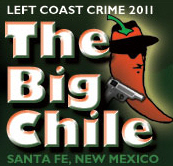So, what to say about New Mexico?
Well, there's the far (human) past:
Petroglyph National Monument and Bandolier National Monument
The more recent (human) past:
Georgia O'Keeffe and Los Alamos (back when)
My little piece of "now":
And lest I leave Victorian times out of the loop... here's a great website, Moments in Time, with a short video about Victorian fashion and New Mexico, a la 1880s. If you've ever wondered how women of this era managed to put on a corset without help, check it out!





 Link to Moments in Time
Link to Moments in Time





